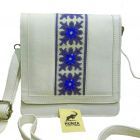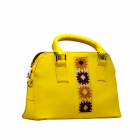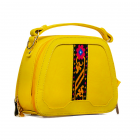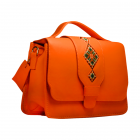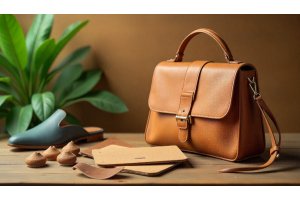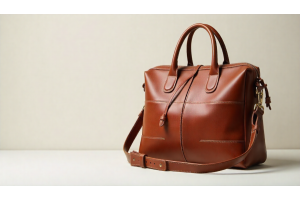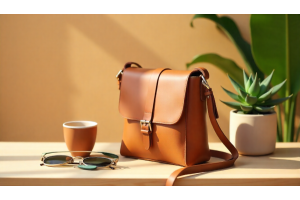Sustainable Leather Shopping: The 2025 Ethical Buyer’s Guide
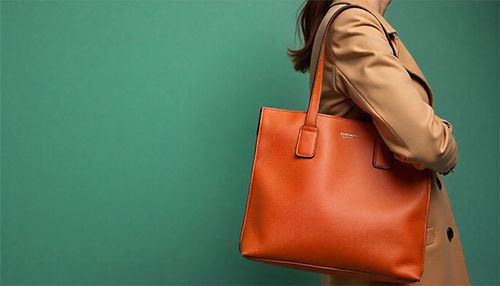
Sustainable Leather Shopping: The 2025 Ethical Buyer’s Guide
In 2025, sustainable leather shopping isn’t just a trend — it’s a conscious lifestyle choice. Today’s ethical buyers are looking beyond labels and luxury, focusing on where and how their leather goods are made. True sustainability in leather means choosing responsibly sourced materials, supporting transparent brands, and understanding the environmental impact behind each product. From plant-based tanning processes to recycled and vegan alternatives, the leather industry is evolving toward cleaner, cruelty-free production. As a mindful shopper, your purchase power can help shape that change — every ethical choice you make contributes to a more responsible and stylish future.
Table Of Content
1.Introduction
In 2025, leather shopping has evolved far beyond choosing between color and style it’s about making choices that reflect your values.
focuses on transparency, environmental impact, and ethical production.
More consumers today are asking: Where did this leather come from, and how was it made? This growing awareness is reshaping the fashion industry, encouraging brands to adopt cleaner tanning methods, use recycled materials, and prioritize fair labor practices.
The goal isn’t to abandon leather entirely but to support responsible craftsmanship that balances durability, beauty, and sustainability.
Through this guide, HimalayanBits helps you become a smarter, ethical shopper — one purchase at a time.
Tip
When shopping for leather in 2025, always check for transparency — brands that clearly share their sourcing and tanning processes are usually the most ethical. Look for certifications like Leather Working Group (LWG) or Global Organic Textile Standard (GOTS) to ensure your purchase supports sustainable practices. Remember, a truly sustainable leather bag isn’t just about style — it’s about making a responsible choice that lasts for years.
2. What is Sustainable Leather?
Sustainable leather is all about creating timeless products without harming the planet or people.
Instead of relying on harsh chemicals and wasteful tanning methods, sustainable leather comes from responsible sources that value transparency, ethical animal treatment, and eco-friendly production.
Modern techniques such as vegetable tanning, recycled leather, and plant-based materials have replaced toxic practices that once polluted rivers and harmed communities.
The goal isn’t to eliminate leather but to make it better — durable, biodegradable, and responsibly made. By choosing sustainable leather, you’re supporting brands that reduce carbon emissions, reuse offcuts, and embrace innovation through materials like mushroom, cactus, or apple leather. In short, sustainable leather is where traditional craftsmanship meets conscious design.
Key Sustainable Processes
The journey toward sustainable leather isn’t just about where materials come from — it’s about how they’re processed. Ethical brands are transforming traditional leather production with eco-friendly innovations that save water, reduce waste, and eliminate toxins. Below are the most important sustainable processes shaping leather production in 2025.
-
1. Vegetable Tanning:
Uses natural tannins from tree bark, leaves, and fruits instead of harmful chromium chemicals. This method produces durable leather that ages beautifully and minimizes pollution. -
2. Water Recycling & Waste Management:
Modern tanneries now reuse up to 80% of water, preventing contamination of nearby rivers and protecting local ecosystems. -
3. Zero-Waste Manufacturing:
By reusing offcuts and scraps, brands reduce landfill waste and create new products such as wallets, tags, or patchwork designs. -
4. Plant-Based Dyeing:
Natural dyes from herbs, fruits, and roots replace synthetic ones, keeping both workers and the environment safe from harsh chemicals. -
5. Renewable Energy Use:
Many sustainable leather producers are switching to solar or wind energy to power their workshops, lowering overall carbon footprints. -
6. Ethical Supply Chain Auditing:
Brands that conduct regular audits ensure fair wages, safe working conditions, and transparency from farm to finished product.
3. How to Shop Ethically
Ethical leather shopping in 2025 is about making informed, responsible decisions rather than impulse buys. With more brands claiming to be “eco-friendly,” it’s important to know how to separate genuine sustainability from clever marketing. Here’s how to ensure your next leather purchase truly aligns with ethical values.
-
1. Check Brand Transparency:
Trust brands that openly share their sourcing, tanning, and manufacturing processes. Authentic labels will highlight where the leather comes from and how it’s produced. -
2. Look for Recognized Certifications:
Certifications such as the Leather Working Group (LWG), Global Organic Textile Standard (GOTS), or Fair Trade mark show that the product meets environmental and ethical standards. -
3. Choose Quality Over Quantity:
Investing in a single, well-made leather bag is far more sustainable than buying several fast-fashion alternatives. Durability reduces waste and long-term costs. -
4. Support Local or Artisanal Makers:
Smaller workshops often produce handmade leather goods using traditional, eco-conscious methods and pay fair wages. -
5. Consider Secondhand or Recycled Options:
Pre-loved or upcycled leather pieces extend product life and minimize environmental impact — a smart, stylish, and sustainable choice. -
6. Research Before You Buy:
Read product descriptions carefully and dig into brand reviews. Ethical shopping is about mindfulness — knowing the story behind every piece you own.
In short, ethical shopping isn’t about perfection — it’s about progress. Each conscious decision you make helps build a fashion industry that values honesty, sustainability, and human welfare.
4. Types of Eco-Friendly Leather
In 2025, eco-friendly leather has expanded far beyond traditional animal hide. Designers and sustainable brands are now using innovative materials that look and feel like leather but have a fraction of the environmental footprint. Whether made from plants, fungi, or recycled waste, each type offers a new way to enjoy style without compromising on ethics.
| Type | Source | Eco Impact | Durability |
|---|---|---|---|
| Mushroom Leather | Mycelium (fungi roots) | Biodegradable & renewable | Moderate to high |
| Plant-Based Leather | Cactus, Apple, Pineapple fibers | Uses waste; low emissions | Moderate |
| Recycled Leather | Reclaimed leather scraps | Reduces waste; upcycles materials | High |
| Vegetable-Tanned Leather | Animal hide + natural tannins | Non-toxic; biodegradable | Very high |
| Lab-Grown Leather | Plant or collagen cells | Cruelty-free; minimal resources | High (still developing) |
These sustainable materials are changing how we think about fashion — proving that eco-friendly doesn’t mean compromising on style or quality. By choosing any of these types of leather, you’re actively supporting innovation and environmental responsibility.
5. Caring for Sustainable Leather
Owning sustainable leather is just the first step — proper care ensures your investment lasts while minimizing environmental impact. Unlike fast-fashion alternatives, high-quality eco-friendly leather can age beautifully if treated responsibly. Here are five essential care tips for keeping your leather items in top condition.
-
1. Keep It Dry:
Avoid prolonged exposure to water. If your leather gets wet, gently blot with a soft cloth and air dry naturally. -
2. Condition Regularly:
Use natural, eco-friendly leather conditioners to maintain softness and prevent cracking. Vegetable-tanned and mushroom leathers especially benefit from occasional conditioning. -
3. Store Properly:
Keep your leather in a cool, dry place. Use breathable dust bags instead of plastic to prevent mold and maintain shape. -
4. Clean Gently:
Wipe with a damp cloth or use a mild, non-toxic cleaner. Avoid harsh chemicals that can damage both the leather and the environment. -
5. Repair Instead of Replace:
Small scratches or loose stitching can often be repaired by professionals. Extending the life of your leather reduces waste and promotes sustainability.
Conclusion
Sustainable leather shopping in 2025 is more than just a trend—it’s a conscious choice that reflects your values and commitment to ethical consumption. By understanding the environmental and social impact of leather production, prioritizing eco-friendly materials, and supporting brands with transparent practices, buyers can make informed decisions that benefit both the planet and the people involved in the supply chain. Ethical shopping doesn’t mean compromising on style or quality; it means choosing products that align with a sustainable future. As awareness grows, every thoughtful purchase contributes to a more responsible fashion industry, making your leather bag not just an accessory, but a statement of mindful living.
FAQS
1. What is sustainable leather?
Sustainable leather is produced using environmentally friendly methods, ethical labor practices, and materials that minimize harm to animals and the planet.
2. How can I identify eco-friendly leather brands?
Look for brands that provide transparency about their sourcing, use vegetable tanning or recycled materials, and have certifications such as Leather Working Group (LWG).
3. Is vegan leather always sustainable?
Not always. Some synthetic vegan leathers use plastics that are harmful to the environment. Opt for plant-based or recycled alternatives for true sustainability.
4. What types of leather are considered ethical?
Ethical options include vegetable-tanned leather, recycled leather, and leather from suppliers following strict environmental and labor standards.
5. How can I maintain my sustainable leather products?
Regular cleaning with natural products, conditioning, and proper storage help prolong the life of your leather items, reducing environmental impact.
6. Are sustainable leather products more expensive?
They can be slightly more expensive due to ethical sourcing and production, but the long-term durability and quality often justify the cost.
7. Why is it important to buy sustainable leather?
Buying sustainable leather reduces pollution, supports fair labor practices, and promotes animal welfare, contributing to a responsible fashion industry.
8. Can I recycle or upcycle my old leather items?
Yes, many brands and local services accept old leather for recycling or upcycling, turning them into new products instead of waste.
9. How do certifications help in choosing ethical leather?
Certifications like LWG or ISO standards ensure that the leather is produced with minimal environmental impact and ethical practices.
10. Can sustainable leather be stylish and trendy?
Absolutely. Many sustainable leather brands offer high-quality, fashionable designs that rival conventional leather, proving that ethics and style can coexist.

